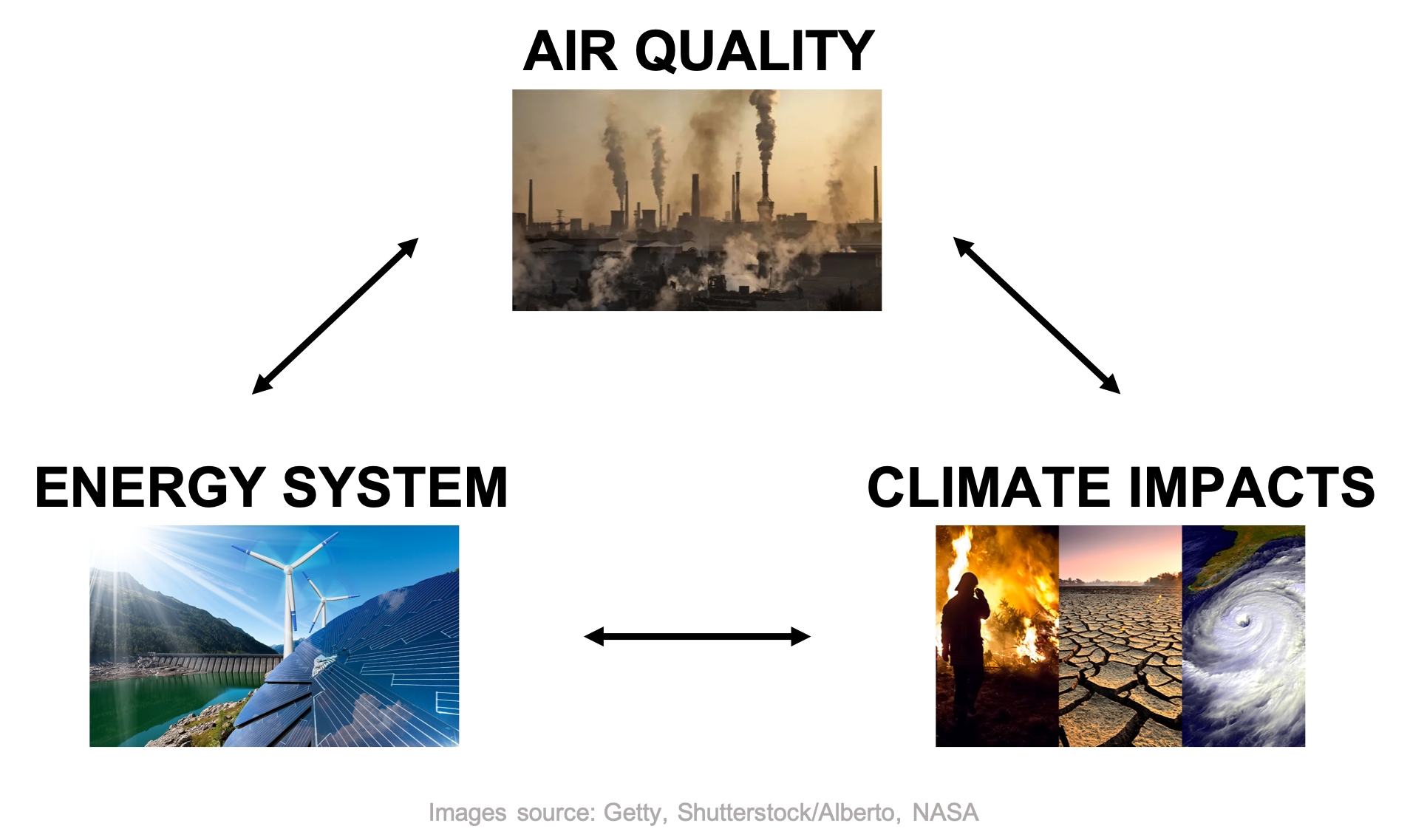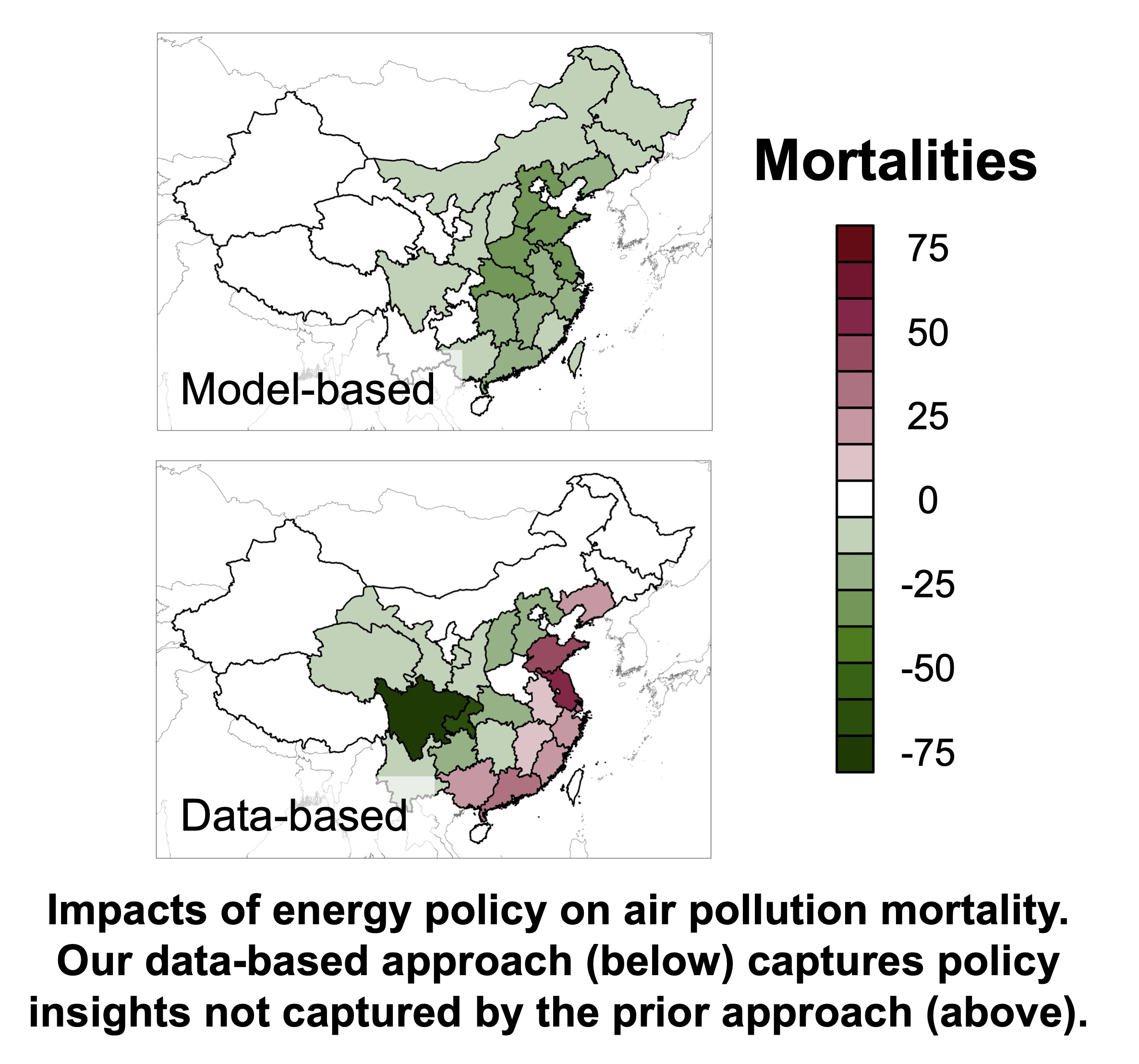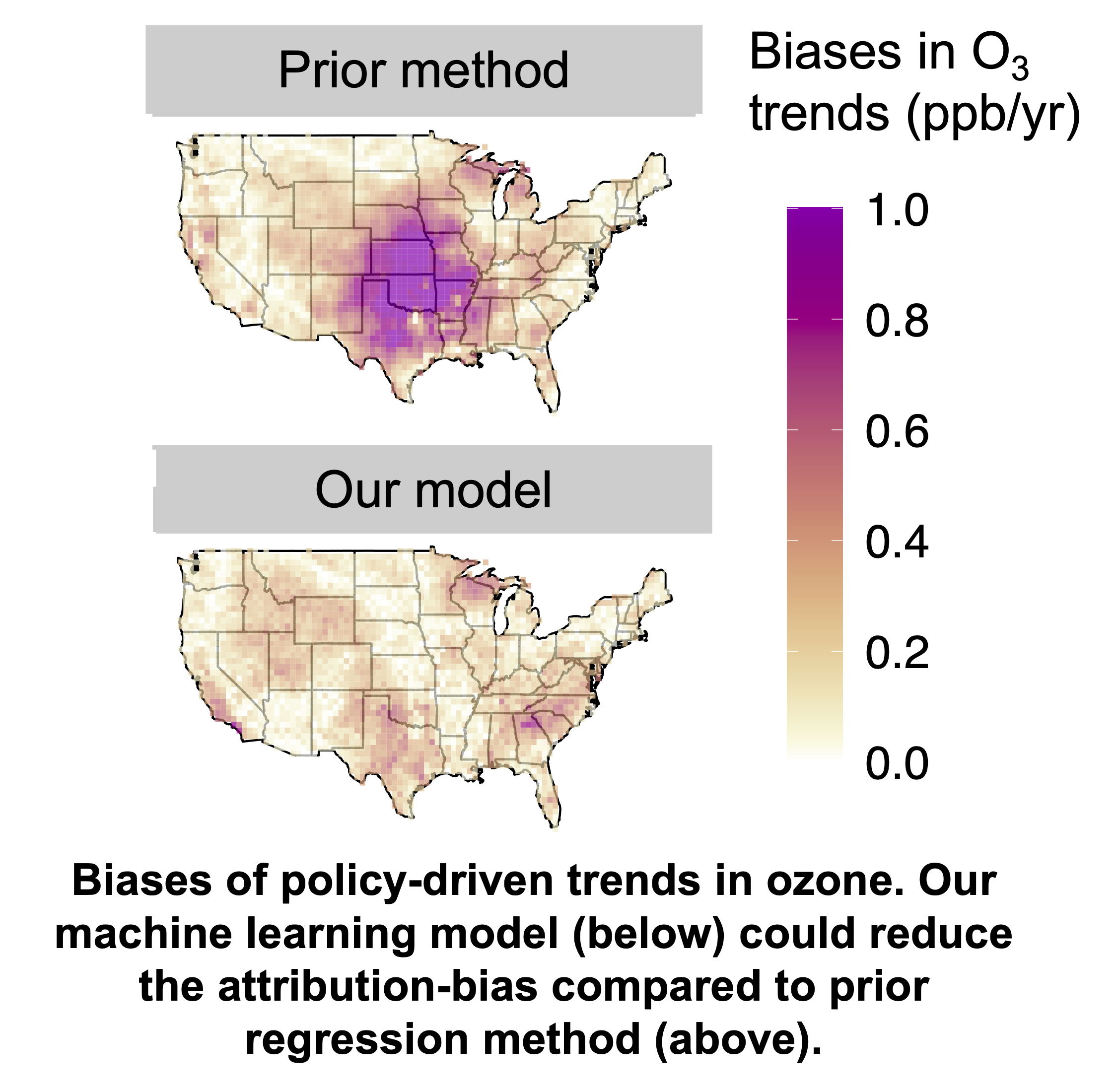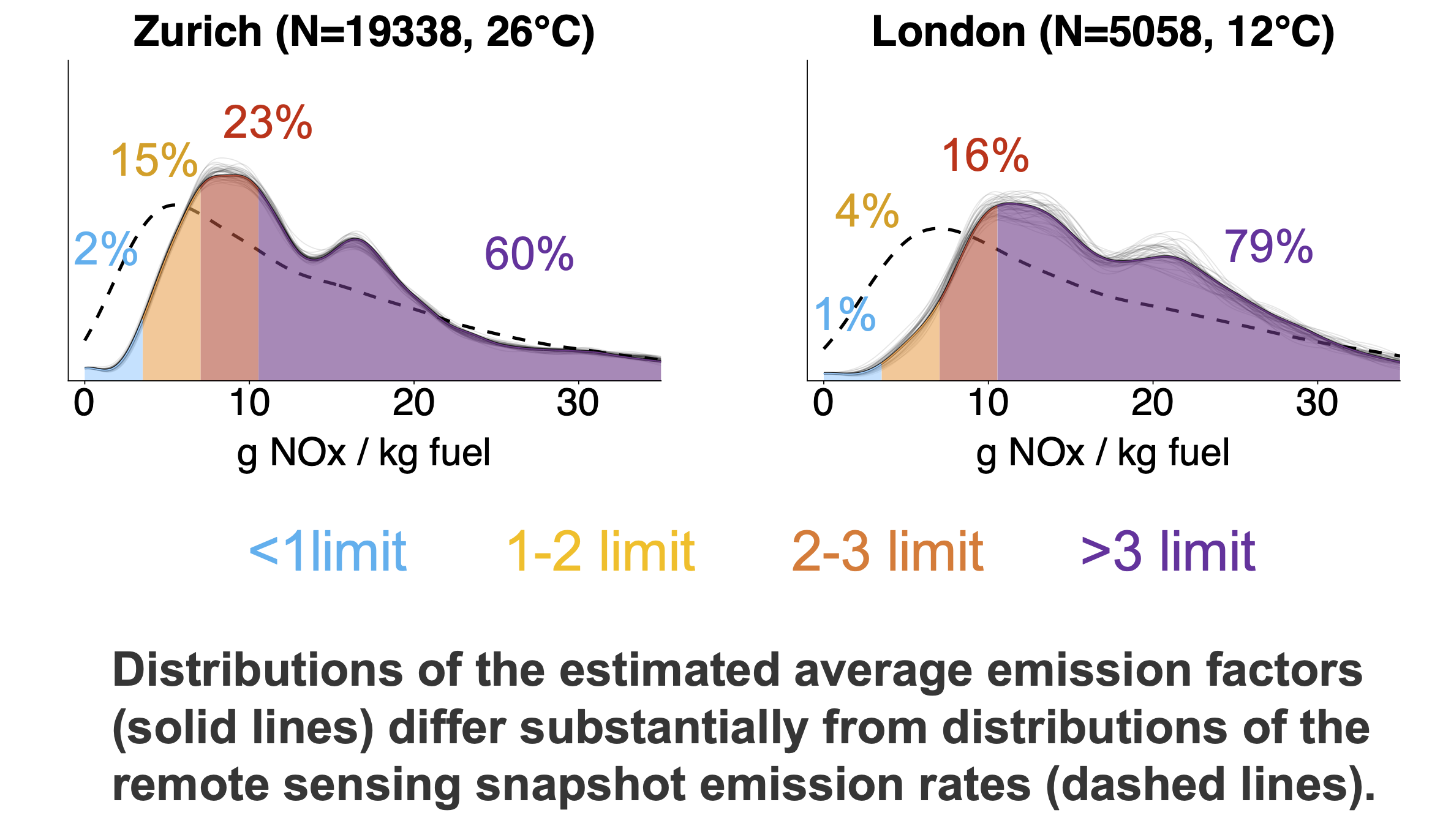Research
My research studies how environmental risks evolve under a changing climate, and how to design effective policies to mitigate their impacts on humans and societies. Specifically, I study the interplay between air pollution and climate change, two critical environmental challenges for humanity in the coming decades. These questions are globally relevant, with countries experiencing high levels of lethal air pollution and increasing climate extremes such as drought and fire, at the same time as they also plan for decadal-scale energy transitions. To shed light on pollution-climate interactions and their impacts, my research combines empirical data, atmospheric chemistry modeling, statistical models, remote sensing, and energy system analysis.

1. Impacts of climate change on air pollution and human health
Climate change can pose a substantial threat to air quality and human health. For example, extreme drought and heat waves can increase the risk of wildfire and dust storms, leading to excessive levels of health-damaging pollutants. However, most existing climate/health studies focus primarily on the impacts of climate change ignored the substantial channel through climate-induced air pollution changes. Quantitative evidence of how climate change influences air pollution and human health is highly incomplete.
Current projects: Impacts of historical and future droughts on electricity system, carbon emissions, and air quality in the Western US. Impacts of climate change on wildfiresmoke exposure over the continental US.
2. Evaluating effects of energy and climate policies on air quality and health

I develop a novel research methodology that integrates causal inference and atmospheric modeling and obtains policy insights that cannot be achieved by any method alone. For example, we used firm-level data and detailed atmospheric chemistry models to assess the effect of an energy policy in China on air quality and found very different results from what researchers would have projected based on process-based models (Qiu et al., EST, 2020). The underlying differences between the data-based evaluations and model-based projections come from the dramatic decline in baseline energy intensity during the studied period in China, and the heterogeneity of policy responses across firms.

Another challenge in evaluating the effects of policies on air quality comes from the variability in meteorological conditions. With insights from a state-of-the-art atmospheric chemistry model, I designed a machine learning-based meteorological correction approach that yields significant improvements over the existing methods. Our method reduces the bias of falsely attributing air quality improvement to emissions changes by over 60% (Qiu et al., ACP, 2022).
3. Designing equitable strategies for air quality management and energy transition
Exposure to air pollution and the associated health burden has been shown to be unequally distributed across populations. My research demonstrates that designing policies to address disparities in exposure to air pollution across population groups, is not straightforward. Focusing on the effects of wind power development on air quality in the US, I showed that developing wind power does not significantly reduce the existing gap of pollution exposure between different population groups, despite its substantial overall benefits on air quality and human health.
4. Identification of high-emitting vehicles

Policy makers have long been interested in detecting ‘high-emitters’, a supposedly small fraction of vehicles that make disproportionally large contributions to total fleet emissions. However, existing identification schemes often exclusively rely on snapshot measurements (i.e. emissions within less than a second), and thus simply identify vehicles with high instantaneous emissions, instead of vehicles with high average emissions over a driving period as regulated by emission standards. We design a comprehensive scheme to address this challenge by combining fleetwide remote sensing measurements with detailed second-by-second emission measurements from individual vehicles (Qiu et al., ERL, 2022).
